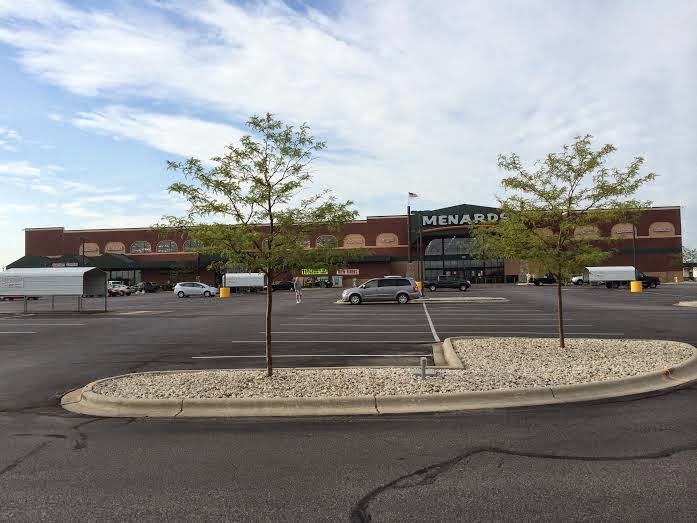We did not stop for many roadside attractions during our
trip, but now that we had seen Pisek and Mahnomen, we had a little time to do
things less centered on the Rumreichs. On our drive to Collegeville, MN, we
stopped at a Suess-like set of buildings. Upon closer inspection, we could see
that they were entirely made out of twings and smaller branches. Interestingly, the artists only took 19 days
to create these “houses” and they had been standing for almost two years.
We arrived in Collegeville, the home of St. John’s
University, by mid-morning. John K., Doc, and Cy had all attended the
University, as well as Aunt Mary’s son, John. The church had a honeycomb
structure that appealed to the bee-lover in me. Although most of the buildings
were closed, we were able to see the majestic campus and buy some bread made by
one of the monks.
For lunch we went to an Indian restaurant, and I was finally
able to realize my goal of eating something besides pizza or a hamburger on
this trip. Aunt Mary had a friend in St. Cloud, MN that joined us for our meal.
At first Nathan and Kyle felt some trepidation about the food, but the
delicious smells of naan bread and curry wafting from the buffet changed their
minds.
After the long drive back to Milwaukee, we said goodbye to Aunt Mary. As
we were getting back into the van, a google street-view van drove past us. We
will all be eagerly checking to see if you can make out our faces with the newest
update!
In the morning, my dad and I woke up early to visit the
world’s largest Menards store, located in Waukesha, WI. It had two stories,
complete with escalators and a pair of glass elevators. There was even a
grocery section! It was my dad’s dream come true.
 |
| Video: Inside the elevator |
We had a little bit of extra time before we went to meet
Aunt Donna and the boys, so we decided to stop at a nearby car show. My dad was
excited to see a Chevy Vega there.
We made a few stops to get supplies for Sunday dinner and
some crullers, along with two Baker’s Square pies. Our final stop of the trip
was at Barnaby’s pizza, home of my dad’s favorite pizza.
This trip had many adventures, stories, and discoveries, lots
of food, and a few disappointments. It was nice to see the spot where my
ancestors settled and began their lives in America. Things must have been much
less restricted than they are today. Sometimes family members would move across
the country and back with a gust of wind. Families were bigger, deaths came
earlier, and sometimes all they would have to eat for a year was potatoes. Things
aren’t as difficult for us now. This journey was a nice reminder of the less tumultuous,
though more complicated, lives we are able to have because of our ancestors.
Frank P. Rumreich worked hard to send his sons to college and Doc, in turn,
send all of his children (adopted or otherwise) to college, and Rumreichs still
get an education at St. John’s. What may be the most surprising tradition, though,
is that we still have Frank Rumreichs, even in my generation. It’s almost
impossible not to chuckle when you see the family tree bristling with them;
they appeared wherever we went! Many things change over the generations, but
after six days in the car and hours spent going through family history, I can assuredly
say that a Rumreich will always be a Rumreich.


























.jpg)







.jpg)




.jpg)












.jpg)





